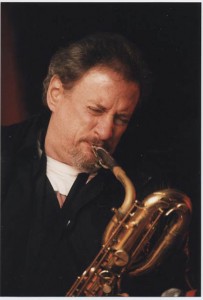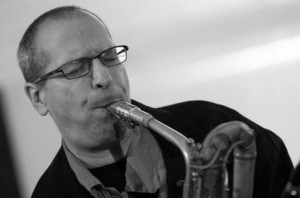New Pepper Adams Transcription – Pent Up House
 A new transcription of a Pepper Adams solo on Pent Up House has been posted on the transcription page. Thanks goes out to Luke Miller for sending the new transcription in!
A new transcription of a Pepper Adams solo on Pent Up House has been posted on the transcription page. Thanks goes out to Luke Miller for sending the new transcription in!
 A new transcription of a Pepper Adams solo on Pent Up House has been posted on the transcription page. Thanks goes out to Luke Miller for sending the new transcription in!
A new transcription of a Pepper Adams solo on Pent Up House has been posted on the transcription page. Thanks goes out to Luke Miller for sending the new transcription in!
 Recently people have been inquiring about other sites we’d recommend around the web. Well here are a few of our favorites at JazzBariSax.com!
Recently people have been inquiring about other sites we’d recommend around the web. Well here are a few of our favorites at JazzBariSax.com!
There are so many websites dedicated to the saxophone, here are just a few:
Go forth and check out all the awesome web sites dedicated to saxophone, and the baritone saxophone!
 Charles Evans’ last album garnered a rare 5 star review from DownBeat magazine. His newest album looks to be no less impressive. It features Charles along with fellow saxophonist Dave Liebman.
Charles Evans’ last album garnered a rare 5 star review from DownBeat magazine. His newest album looks to be no less impressive. It features Charles along with fellow saxophonist Dave Liebman.
To celebrate the new release there is a CD release party at ShapeShifterLab in Brooklyn.
Be sure to check out this new album, and head to the CD release party for some excellent baritone saxophone performances.
 The Litchfield Jazz Festival is this weekend, August 9th-11th. On Saturday Gary Smulyan will be leading a Baritone Summit, featuring himself, Claire Daly, Lauren Sevian, and Andrew Hadro.
The Litchfield Jazz Festival is this weekend, August 9th-11th. On Saturday Gary Smulyan will be leading a Baritone Summit, featuring himself, Claire Daly, Lauren Sevian, and Andrew Hadro.
The Litchfield Jazz Festival is held on the beautiful Goshen fairgrounds in northwestern Connecticut and features a great line up. Click here to check out their line up and purchase tickets!
 A new transcription of a Ronnie Cuber solo on the beautiful song, “Emily” has been posted to the transcription page. Thanks goes out to Bohdan Janeczek for this new transcription!
A new transcription of a Ronnie Cuber solo on the beautiful song, “Emily” has been posted to the transcription page. Thanks goes out to Bohdan Janeczek for this new transcription!
Gary Carner, who has done a huge amount of work to promote and spread Pepper Adams‘ great legacy has a new project and it needs some help from everyone. See what he has to say about it:
“I’m very excited to let you know that I’ve recorded a fantastic new CD of big band charts of Pepper Adams compositions for Motema Music. This is the sixth CD in my series, and it’s the first recording of its kind ever undertaken. It will be released in January, 2014. It wouldn’t be possible if it wasn’t for the esteemed British arranger Tony Faulkner, who wrote all the charts. Faulkner is little known outside of England, but this project should change that in a hurry.
Ten superb performances that were done over Easter weekend by the Concert Jazz Band at the University of Illinois, with solos by their superb faculty, including Glenn Wilson. I need to raise $7,000 to pay the arranger for all his great work, to pay the engineer to mix and master the date, and to pay for Faulkner’s flight to the US so we can promote this great music with concerts, lectures, and radio shows throughout the US and Canada.
In order to release the recording, and subsidize the CD marketing tour to promote this great music in advance of its commercial release, I’m asking for your help. Kickstarter is a project-driven, crowd-funding website that allows the Pepper Adams world community to work together in a grassroots way to make this happen and perpetuate Pepper Adams’ legacy. But it’s an all-or-nothing deal. If I don’t meet or exceed my goal of $7,000 by the 30-day deadline, no money changes hands, no rewards are given, the new recording stays on the shelf, and the tour is in jeopardy. Can you please help? Can you work with me to bring this exciting project to fruition?
Please use either URL, go to the site, and donate whatever you can. No donation is too small and all is very much appreciated! For your generosity, some great gifts await you! You’ll see them at my Kickstarter page.
This is a 30-day sprint, so please spread the word. I’m looking forward to sharing this music with you. Long live Pepper Adams!
Thank you,
Gary Carner”
 Great news from fellow baritone saxophonist, Shirantha Beddage!
Great news from fellow baritone saxophonist, Shirantha Beddage!
“I’m excited to report that on Friday, July 5, 2013 I won the Galaxie Rising Star Award at the Montreal Jazz Festival! This prize was based on a performance at the Festival by my quartet, which included Dave Restivo, Mark Kelso and Mike Downes. The award is given for the most outstanding Canadian composition amongst the groups performing in the outdoor concerts, and it is a cash bursary accompanied by airplay on Galaxie Satellite Radio in Canada. The jury selected two of my tunes, “Baker’s Dozen” and “Winds of Change”, both from my Juno-nominated new album, “Identity”. As a result, I was interviewed by Mark Ruffin (Sirius / XM Satellite Radio – USA) and Michael Bourne (WBGO – New York City) during the festival.”
Congratulations to him! Be sure to check out his latest album.
 The winner for Baritone Saxophone in the 61st annual DownBeat Magazine Critics Poll is Gary Smulyan!
The winner for Baritone Saxophone in the 61st annual DownBeat Magazine Critics Poll is Gary Smulyan!
The winner for the Rising Star category is Vinny Golia.
We’re looking forward to the readers poll opening soon!
 Roger Rosenberg has recently submitted a great article with his unique insights on playing in sections as a baritone saxophonist. Roger has a huge wealth of knowledge when it comes to playing in ensembles and he has played and recorded with some of the best bands around.
Roger Rosenberg has recently submitted a great article with his unique insights on playing in sections as a baritone saxophonist. Roger has a huge wealth of knowledge when it comes to playing in ensembles and he has played and recorded with some of the best bands around.
Click here to read Roger’s article on section playing!
You can catch Roger June 1st at Smalls in NYC co-leading the Hayes Greenfield-Roger Rosenberg Quartet. Roger will also be on tour with Steely Dan mid July through October.
 Congratulations goes to Gary Smulyan this year, as he is the current winner of the Jazz Journalist Association’s Baritone Saxophonist of the Year category!
Congratulations goes to Gary Smulyan this year, as he is the current winner of the Jazz Journalist Association’s Baritone Saxophonist of the Year category!
Check out the full list here:
http://www.jjajazzawards.org/2013/05/2013-jja-jazz-awards-winners-music.html